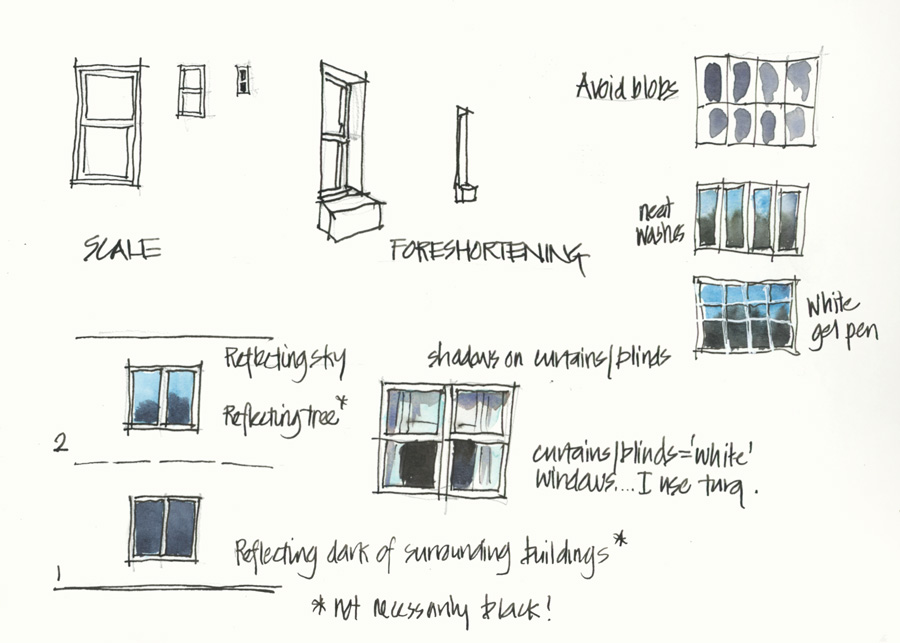
Inside my SketchingNow courses, I often get asked for some tips for sketching windows/ glass.
Last year I did cover this topic in some detail during a livestream inside my Edges course (Refer to Livestream 7 2021 in section 4.18 of Edges) but these sketches summarise those thoughts.
A few comments that relate to these sketches
- Draw as much detail as you can depending on the scale of your drawing. There is a frame to the opening as well as a frame around each pane, and then sometimes additional mullions.
- Make sure you understand how foreshortening affects windows – often you see more of the sides of the wall opening than the window itself (more about that in Buildings Intro Lesson 2 and this article.)
- Make sure that any window/glass treatment fits in with the rest of your sketch (the amount of detail, the colours, the values etc)
- Avoid blobby paint for glass – instead ensure crisp edges. Sometimes the easiest way to achieve this is to apply opaque white over the top of your glass washes. My preference is white gel pen – Pentel Signo Broad.
- The glass in windows on the upper levels of a building reflects the sky and the glass on the ground floor level reflects the surrounding buildings or trees. This page shows black-ish reflections but they are not necessarily true black or as solid as I’ve shown on these diagrams.
- Furnishings (curtains, blinds etc) result in white-ish windows – I normally use a pale turquoise wash (Cobalt Turquoise Light) as this colour makes me happy.
- There are often shadows cast by window /window framing onto the curtains/blinds.
- I often adjust the position of blinds to suit my sketch ie. if all the blinds are pulled down making all windows in a building white, I often raise them in my sketch and create variety!
- The glass on the shaded side of a building is often lighter than the glass on the sunny side due to reflected light.
- Shop fronts can be complex – but my current approach is to draw/paint the interiors first (no ink) and then add or adjust for reflections (particularly lighter reflections) afterwards.
If you are wanting some tips on skyscrapers and glass reflections:
- Index of all my skyscraper sketches
- Summary of my Chicago workshop (including PDF handout)
Hope these thoughts are helpful! There is more to the topic but these are the main considerations and techniques that I use.
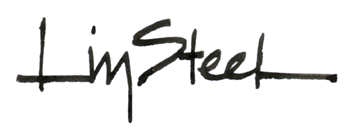
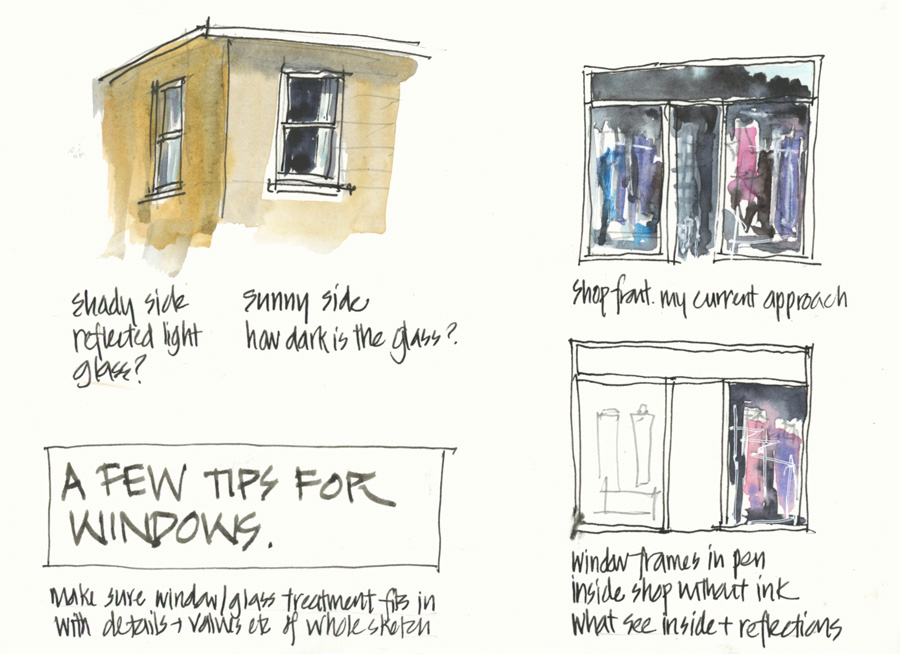
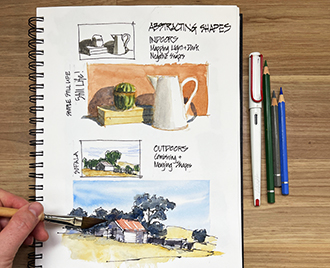

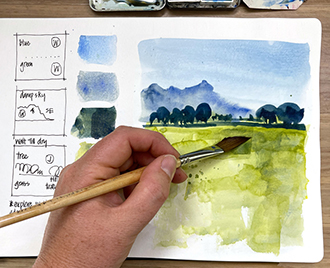
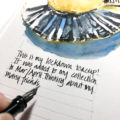


8 Comments
Hi Liz!
These “Tips’ are the best!
I love the way this post is organized with notated illustrations and then a list of tips following.
Have you ever considered a book of your tips? You’ve certainly accumulated so many in your blog posts!
Having them organized in one concise place to flip through would be so valuable for we followers out here who love your style and material!! (…and you!)
I have your ‘5 minute Sketching Architecture’ book which I love. Even more, would love another book from you! Any possibility? Yes?!
Thanks Liz!
Maria Bergman
Thanks for the idea Maria – I’ve never thought about a tip book!
Thank you Liz—it was very helpful to have that all laid out.
Another thing I’m trying to figure out about windows is how to do those quick flashes of watercolor that just suggest vertical windows on a distant building. For some artists it’s become a bit of a cliche rather than a piece of close observation of those actual windows, but I think it would be useful to have my own person shorthand for that.
Hi Laurie – thanks for bringing up the foreshortened windows… I think that if they are to be simplified they should be wall colour mainly not glass colour (except for the ones closer to you). Something to explore for sure!!!
Thanks Liz, yes that definitely helps for windows on small buildings. I was also looking for tips for tall glass towers like we have in Bangkok. I just came across this post that gives some ideas:
https://ninajohansson.se/2017/12/the-staggering-height-of-buildings/
Thanks for bringing that up Sophie – I’ve now added links for articles about skycrapers.
Thanks, Liz. So helpful! I am guilty big time of the blobby window so it’s great to see how better to do it. I shall enjoy practising.
Enjoy Georgy!
NEWSLETTER
Subscribe for first notification of workshop + online classes and more.